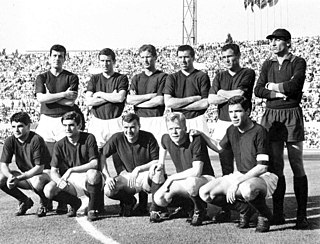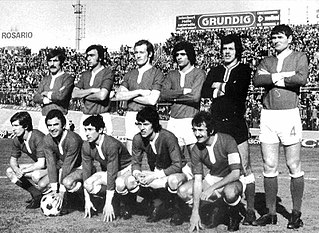The 2001–02 Serie A was the 100th season of top-tier Italian football, the 70th in a round-robin tournament. It was composed by 18 teams, for the 14th consecutive time from season 1988–89.
The 1997–98 Serie A saw Juventus win their 25th national title, with Internazionale placing second; both teams qualified for the 1998–99 UEFA Champions League. Udinese, Roma, Fiorentina, Parma qualified for the 1998–99 UEFA Cup. Lazio qualified for the UEFA Cup Winners Cup courtesy of winning the Coppa Italia. Bologna and Sampdoria qualified for the 1998 UEFA Intertoto Cup. Brescia, Atalanta, Lecce and Napoli were relegated to Serie B.
The 1995–96 Serie A title was won by Milan, with Juventus finishing as runners-up. Fourth placed Fiorentina tasted glory in the Coppa Italia, while seventh-placed Internazionale only narrowly managed to qualify for the UEFA Cup under the management of their new English head coach Roy Hodgson. In fact Internazionale needed both Fiorentina beating Atalanta in the 1995-96 Coopa Italia Final and their (Internazionales) arch rivals AC Milan and Juventus win the Serie A (Milan) and the 1995-96 UEFA Champions League Final (Juventus). Had one of these three things not occurred Internazionale would have missed out on european football for the second time in four years. Bari, Torino, Cremonese and Padova were all relegated.
The 1994–95 Serie A was won by Juventus, who finished 10 points ahead of their nearest rivals Parma and Lazio.
In 1992–93, the Serie A title was retained by Milan, who finished four points ahead of Internazionale. Third placed Parma enjoyed European glory in the European Cup Winners Cup, while unfancied Cagliari crept into the UEFA Cup qualification places at the expense of the 1991 champions and 1992 European Cup finalists Sampdoria. Roma and Napoli finished mid table after disappointing campaigns, while Brescia, Fiorentina, Ancona and Pescara were all relegated.
The 1988–89 Serie A was won by Internazionale, who won the title comfortably by an 11-point margin over runners-up Napoli. Milan's triumph in the European Cup meant Italy would be entering two teams – both the two giant Milan sides – into the European Cup for the 1989–90 season. Relegated to Serie B were Torino, Pescara, Pisa and Como.

The 1970–71 Serie A season was won by Internazionale.
The 1954–55 Serie A season was won by AC Milan.

The 1961–62 Serie A season was won by Milan.

The 1960–61 Serie A season was won by Juventus.
The 1962–63 Serie A season was won by Internazionale.

The 1963–64 Serie A season was won by Bologna.
The 1964–65 Serie A season was won by Internazionale.
The 1965–66 Serie A season was won by Internazionale.
The Serie B 1934–35 was the sixth tournament of this competition played in Italy since its creation. This championship was organized with two groups.
The Serie B 1939–40 was the eleventh tournament of this competition played in Italy since its creation.
The Serie B 1968–69 was the thirty-seventh tournament of this competition played in Italy since its creation.
The Serie B 1969–70 was the thirty-eighth tournament of this competition played in Italy since its creation.
The 2002–03 Serie B was the 71st season since its establishment in 1929. It is the second highest football league in Italy.

The Serie B 1973–74 was the forty-second tournament of this competition played in Italy since its creation.






